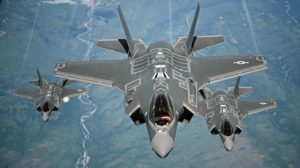That’s the question that at least one defence industry analyst was prompted to ask upon hearing of the Liberal government’s plan to purchase 18 F/A 18 Super Hornet fighter jets from Boeing yesterday.
The government may think its “interim purchase” is going to solve the Armed Forces’ “capability gap” but the move appears to be raising more questions than providing solutions.
“I’m not really sure why it’s necessary to resort to this interim purchase,” said David Perry, a senior analyst, and a fellow with the Canadian Global Affairs Institute. The CGAI is a non-partisan research institute that focuses on Canadian defence and foreign policy issues.
The Canadian government has been seeking for replacements to its aging fleet of 1980s era CF-18 fighter jets. Canada originally had 138 CF-18s bought at a cost of $4 billion from 1982 to 1988. Accidents and retirements have reduced the fleet to 77. Even with upgrades, the remaining aircraft will only remain on the air until 2025. The Harper government had its eyes set on the F-35. It set a budget of $9 billion for purchasing replacements for the fleet but that figure would also mean a lower number of planes. At that time the number being bandied around was 65 units.
Related Content
Liberals announce ‘interim purchase’ of 18 Boeing Super Hornets
Boeing reports US$3-B in economic benefits to Canada
Lockheed Martin Canada opens innovation centre in Kanata
The Liberals have been opposed to the Conservative’s plan to purchase Lockheed Martin’s F-35. They said it was too expensive and Prime Minister Justin Trudeau had promised the Liberals would never buy the F-35. On Tuesday, the Liberals announced its was purchasing 18 Super Hornets from Boeing but will still remain in Lockheed Martin’s F-35 Lighting II development program. The government said it will still hold its CF-18 replacement competition before the end of Trudeau’s term.

In an interview with Vanguard today, Perry outlined some of the difficulties that could arise if Canada were to make an initial purchase of fighter jets from one manufacturer and some years down the line buy more planes from another company.
No bargains
He also warned that Canada could be in for a sticker shock with its latest decision.
During the 2015 election campaign, the Liberals were confident they could acquire Super Hornets for $65 million per unit. They said they F-35’s flyaway price was $175 million per unit.
Perry said it would be hard for the Liberals to find a bargain considering that recently the Kuwaiti government purchased 40 Super Hornets for $13.5 billion.
“Even taking into account different systems and weapons packages it’s still hard to see how Canada would purchase 65 Super Hornets of F-35s for the $ 9 billion budget today,” he said. “Where are they getting the money for this?”
No logic in interim purchase
Perry also said he found it hard to see the logic in the government’s decision to make an interim purchase.
While the move might address the immediate need to fill the CAF’s so-called capability gap, it may cause some issues later on.
If the CF-18 replacement competition that the Liberals promised some four years from now were to result in the purchase of another plane other than the Super Hornet, Perry foresees massive costs.
“We could end up maintaining two different fleets of aircraft,” said Perry. “That would be more expensive.”
Vanguard Magazine talks to the F-35 Lightning II and F/A18 Super Hornet lead test pilots, click on the image below
Such a scenario would require the Air Force to spend money on separate training programs for pilots, maintenance crews and technicians for two planes. The military will also have to procure separate parts, manuals, and other materials, he said.
Perry also pointed out that Canadian defence companies could suffer a hit if Canada doesn’t go with the F-35.
Officials said on Tuesday that Canada will remain within the F-35 development program. Lockheed Martin also well said it considers a “valued partner in the F-35 development program.”
However, if Canada doesn’t end up purchasing the Lockheed Martin aircraft, this could mean a loss of business for Canadian companies now partnering with the development of the plane.
“Yes, we are a ‘valued partner’ but will we still valued as industrial participants?” Perry asked.

